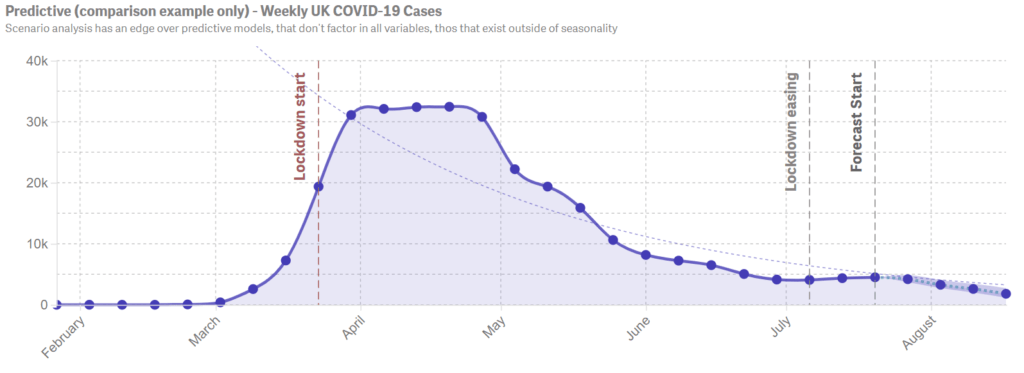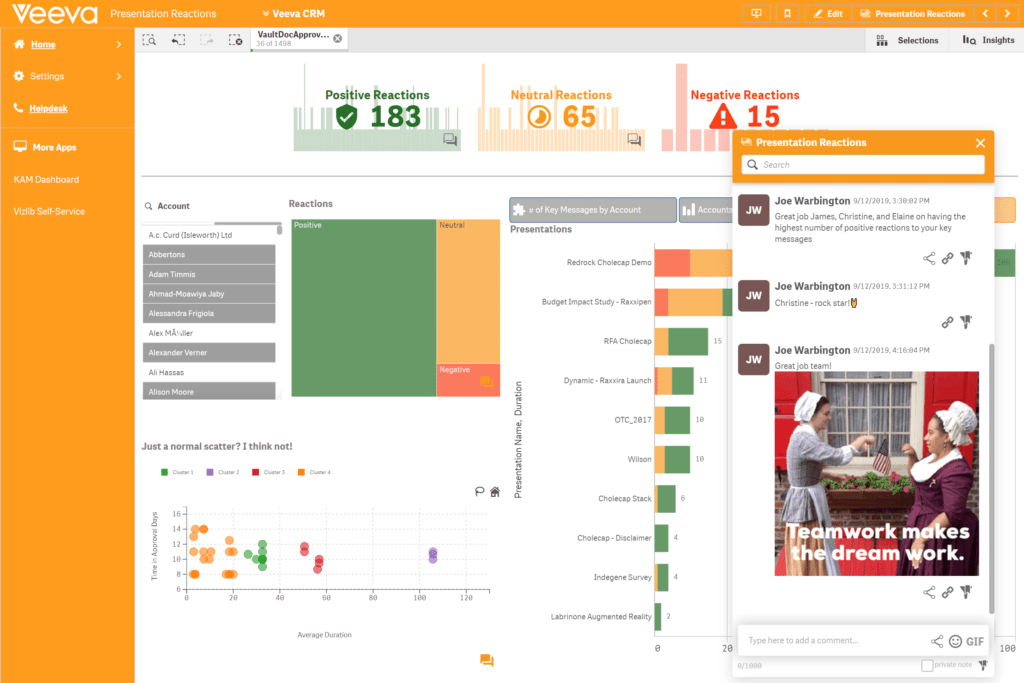Pharmaceuticals and Life Sciences Easy to Explain
In Pharma and Life Sciences, data analytics has a far-reaching effect — beyond improving operational efficiency, it also impacts the overall health and well-being of the planet's population.
What's driving the adoption of data analytics in Pharma and Life Sciences?
There are many opportunities where data analytics can help to improve the sector, such as r egulatory oversight . Pharma organisations need to abide by stringent regulations , such as the Patient Protection and Affordable Care Act (PPACA) in the United States, to ensure the safety of their products for patients. In addition, many of these organisations deal with a global network and have to comply with multiple regulatory frameworks.

Coupled with the cost of compliance and the penalties of non-compliance , these frameworks are forcing providers to shift their overall approach. The focus is moving to a model of reimbursement based on health outcomes. And, though these compliance parameters often affect cost and revenue potential in the industry, there is an upside. The changing regulatory environment is creating a foundation for data throughout the field.
This heightened oversight has a ripple effect on Research and Development (R&D). The cost of R&D is increasing, creating a decrease in production. Consequently, R&D teams need to defend their budgets with data that clearly demonstrates the success of their products and supports their pricing position.
Another factor that motivates analytics adoption is opportunities in growth and profitability. In a global marketplace, organisations have to contend with challenges like such as customer demographics, little or no patient exclusivity and ever-increasing competition. Data-driven insights can transform these challenges into opportunities and provide the momentum to make the right decisions at the right time.
Lastly, providers need to innovate to deliver 'the goods'. Those that adopt digitisation through 3rd party cloud-based services narrow the customer gap. And, as the industry gets more public scrutiny through social media, analytics becomes even more important as a digital media management tool . Data directly impacts the viability of pharma and life sciences organisations – their bottom line and the quality of life of patients.
Popular applications of data analytics in Pharma and Life Sciences

Data analytics has broad application in the pharma and life sciences field. Let's look at the various levels of application .
- At the most basic level, organisations use data analytics for reporting. The goal is to build data repositories and report on current situations such as adverse event reporting in the drug manufacturing process.
- Descriptive analytics: At a deeper level, the industry applies descriptive analytics to draw actionable insights from current situations using complex data. Users typically measure and analyse metrics such as ROI or the customer journey in Pharma and Life sciences.
- Predictive analytics: The next step, predictive analytics, helps in predicting the likely outcomes of events. Using structured and unstructured data from various sources, data analysts perform tasks such as revenue forecasting on health outcomes or use analytics to predict adverse events.
Vizlib Line Chart's predictive analytics capability

- Prescriptive analytics: The final step. Prescriptive analytics is about prescribing actions based on predictions. At this level, actions could include the analysis of Electronic Health Records (EHR), which provide insights into early-stage drug development or the predictive analytics could guide practitioners on the best medical approach.
Visualising data in Life Sciences: what are the benefits?
Data visualisation helps organisations access accurate, complex information at a glance, enables innovative product development, safe medicines and empowers workers to make life-changing decisions.
This visual storytelling tool makes data easier to work with and understand. Platforms are easier to use and more frequently housed in the cloud. And if it's all on the web, it provides easy access for all users in the organisation.
Pharma and life sciences practitioners can visualise all their key information on one platform. As a result, they can draw information from various sources, like public and multiple in-house databases, into one system. It's a big need in the industry and easily satisfied with the right innovation.
Innovative data visualisation solutions provide a further user benefit – the ability to interact with the data. Users can drill down into data that catches their attention. An essential requirement in any field of scientific study. And different users, like researchers or quality managers, will have differing requirements for what data they want to see and how they want to see it. Solutions that support this level of data interactivity can help the industry continue to grow.
Drilling down to granular-level data
The benefits of data visualisation at a function level allow these organisations to manage large data sets . Researchers can render 3D models of protein structures, for instance, and analyse numerous, complex models at the same time. They can also create a concise view of all 3D models, based on the 'overview first, details on demand' principle.
Plus, they can view connections between data sets and view data from multiple viewpoints. In the field of sequencing, data visualisation is indispensable as it collates vast quantities of data for analysis.
Lastly, organisations can take advantage of visualisations to track chains of events such as cell development over time. These data-driven solutions are essential for processing the mountains of data simply and with high accuracy.
Creating powerful ad-hoc Pharma reports that drill down into the data with Vizlib Self-Service

Overall, the benefits of data visualisation are moving beyond explaining known facts, such as presenting research findings or to validate spend decisions. New avenues may leverage an exploratory approach to find new insights and targets for their products, and shift the industry status quo.
Dashboarding in Pharma and Life Sciences
To get the most from data, organisations need to empower all users to create dashboards and explore data confidently. They should be able to customise their visualisations according to their specific role and data skill level. Then they can dive deep into data to support their day-to-day business decisions.
Tips to create a compelling dashboard
- Consider the target audience and what they need to achieve with the data. This will lead to an effective dashboard and visualisations that tells the right story.
- Focus on what will create a logical flow of information for the dashboard layout. Perhaps create a mind map that shows the flow of information and connections between graphs.
- Lastly, make sure the dashboard is easy to understand. It should be understood at a glance. The end-user doesn't want to waste time figuring out what's going on .
Dashboarding can ramp up efficiency in all parts of an organisation. And it caters to the individual's skill level. It also enables Pharma and Life sciences organisations to save costs and boost sales by bringing together data from various sources into one dashboard.
Data visualisation connects people, systems and operations. In pharma and life sciences, it results in easy engagement with patients, investigators, health care organisations and practitioners. And it facilitates partnerships that can solve big problems. With collaborative data-sharing, organisations can take on complex health issues such as genomics and oncology. And, their data can tell a story of inspiration and hope.
Want to learn more about the value of data visualisation in life sciences? Watch our webinar!
Source: https://home.vizlib.com/what-can-data-visualisation-do-for-pharma-and-life-sciences/
Post a Comment for "Pharmaceuticals and Life Sciences Easy to Explain"